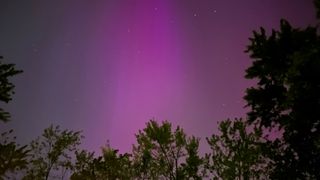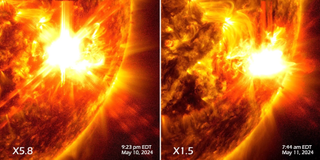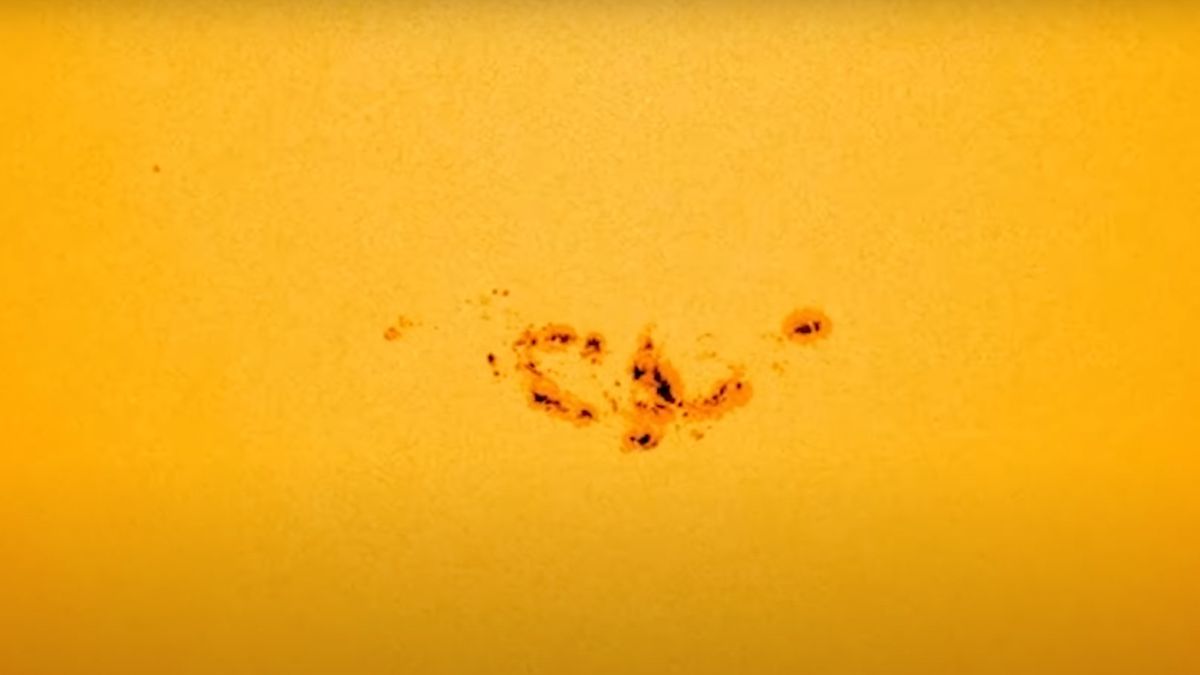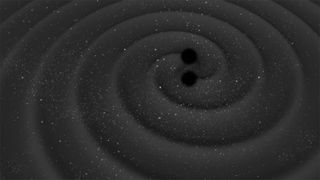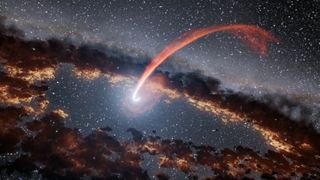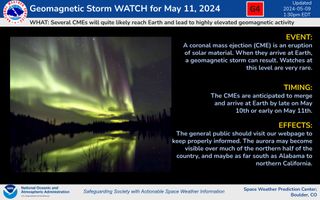2024 has been quite the year for spectacular space shows, some of them visible from our own backyards. First, it was the total solar eclipse at the beginning of April. Then, late last week, the sun became the “star” attraction yet again: A huge sunspot launched a series of solar storms that supercharged the aurora, making the ethereal sight visible from much of the United States, Europe and many other parts of the globe. Personally, after being completely overwhelmed with emotion experiencing the total solar eclipse in Dallas, I thought…
Read MoreCategory: The Moon
Our moon
Scientists could make blazing-fast 6G using curving light rays
The future of cellular data transfer could lie in “curving” light beams midair to deliver 6G wireless networks with blazing-fast speeds — bypassing the need for line of sight between transmitter and receivers. In a new study published March 30 in the journal Nature’s Communications Engineering, researchers explained how they developed a transmitter that can dynamically adjust the waves needed to support future 6G signals. The most advanced cellular communications standard is 5G. Expected to be thousands of times faster, 6G will begin rolling out in 2030, according to the…
Read More‘Extreme’ solar storms cook up sweet Mother’s Day auroras for Moms everywhere
Want to save all the calories from Mother’s Day brunch? You may still be able to “sweeten” the holiday with a view of the ramped-up northern lights again tonight (May 12)! Plasma from a powerful solar eruption called a coronal mass ejection (CME) slammed into Earth on Friday (May 10), sparking an intense geomagnetic storm. One of the effects was a supercharged northern lights display, which provided skywatchers in much of the U.S. and other regions around the world with absolutely mesmerizing aurora views over the weekend. “The aurora may…
Read MorePowerful sun storms could give us a great aurora show for Mother’s Day
Want to save all the calories from Mother’s Day brunch? You may still be able to “sweeten” the holiday with a view of the ramped-up northern lights again tonight (May 12)! Plasma from a powerful solar eruption called a coronal mass ejection (CME) slammed into Earth on Friday (May 10), sparking an intense geomagnetic storm. One of the effects was a supercharged aurora, which provided skywatchers in much of the U.S. and other regions around the world with absolutely mesmerizing views of the northern lights. And the show could continue…
Read MoreThe stormy sun erupts with its biggest solar flare yet from a massive sunspot — and it’s still crackling (video)
Just when we thought we’d seen the most powerful flares from a colossal sunspot, the sun unleashed its strongest eruption of the weekend yet, triggering a radio blackout even as the star continues to crackle with solar storms. According to NOAA’s Space Weather Prediction Center (SWPC), the dynamic solar flare occurred late Saturday (May 10) from an active sunspot region called AR3664. It peaked at 9:23 p.m. EDT (0123 May 11 GMT), registering as a massive X5.8 class flare, SWPC officials said. As a result, parts of some of the…
Read MoreHouston, we have an encore: ISS virtual reality experience ‘The Infinite’ returns
What do you do for an encore after you have virtually transported thousands of Houstonians to the International Space Station? If you are Felix & Paul Studios, you invite them back to fly to the moon. “Space Explorers: THE INFINITE,” which three years ago made its U.S. premiere in Houston, is now back in Space City for a limited second run. The interactive and immersive experience is again inviting the public to explore a virtual, life-size replica of the International Space Station (ISS), letting them almost feel what it is…
Read MoreWatch monster flare-spewing sunspot grow to be 15 times wider than Earth (video)
If there were a Page Six for what’s going on in space, the sunspot region AR3664 would definitely be one of the biggest “stars” highlighted. Over the past few days, the region has grown to be roughly 124,300 miles (200,000 kilometers) wide — more than 15 times the diameter of Earth. You can see this dramatic evolution in a new time-lapse video, which consists of imagery gathered by NASA’s Solar Dynamics Observatory spacecraft. And AR3664 is active as well as enormous: It keeps firing off powerful solar flares and coronal mass…
Read MoreCracking! Some binary black holes may roll around each other in egg-shaped orbits
Black hole week reaches its conclusion today (May 10), and there’s no better way to mark the occasion than with some “eggs-traordinary” black hole science. Using gravitational wave measurements by the Laser Interferometer Gravitational-Wave Observatory (LIGO), based in the U.S., and the Virgo and KAGRA detectors, located in Italy and Japan, respectively, scientists have found that the orbits of some binary black holes could be egg-shaped and exhibit a curious wobble. This research is more than a mere curiosity (and an “eggs-cuse” to crack some bad egg-related puns). The discovery…
Read MoreNASA’s Roman Space Telescope will hunt for the universe’s 1st stars — or their shredded corpses, anyway
NASA’s forthcoming Nancy Grace Roman Telescope could use the grisly death of stars ripped apart by black holes to hunt the universe’s first population of stellar bodies. These early stars, referred to (somewhat confusingly) as Population III (Pop III) stars, were very different from the sun and other stars seen in the cosmos today. That’s because the universe wasn’t yet filled with “metals,” the term astronomers use to describe elements heavier than hydrogen and helium. Pop III stars arose just a few hundred million years after the Big Bang and…
Read More4 large incoming solar bursts could supercharge the auroras this weekend
The National Oceanic and Atmospheric Administration’s Space Weather Prediction Center (SWPC) has bumped up this weekend’s geomagnetic storm watch to a level G4, the second highest on the scale. The change comes as solar activity continues at high levels and at least four coronal mass ejections (CMEs) propel toward Earth. According to the NOAA’s SWPC, to have a watch at this level is rare, but it is indeed issued when there’s a high likelihood that several CMEs will reach Earth and create “highly elevated” geomagnetic activity. As we’ve reported lately,…
Read More